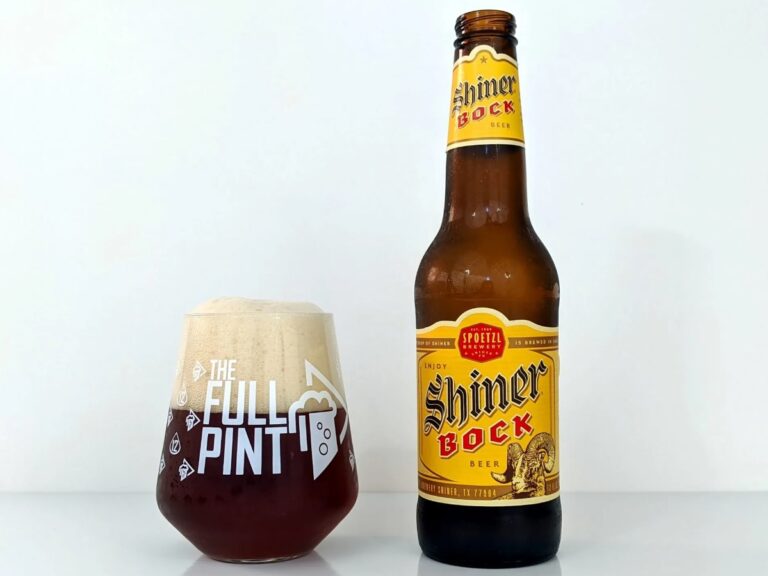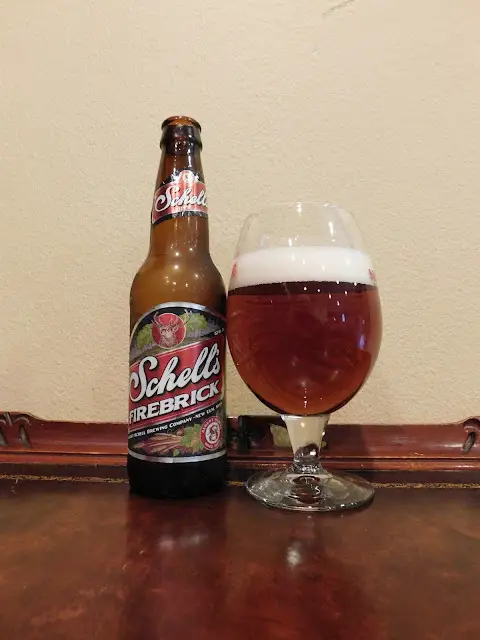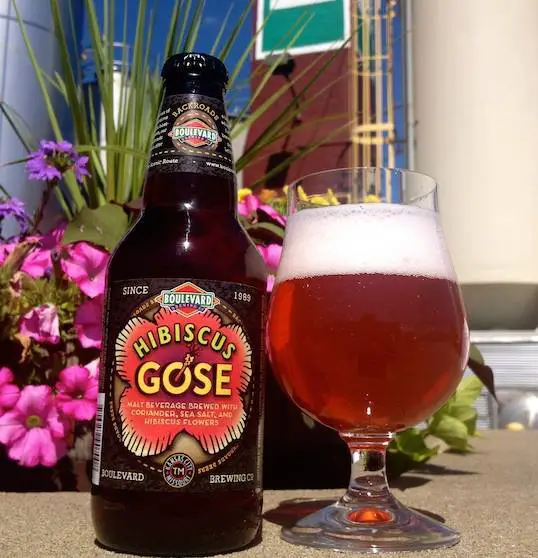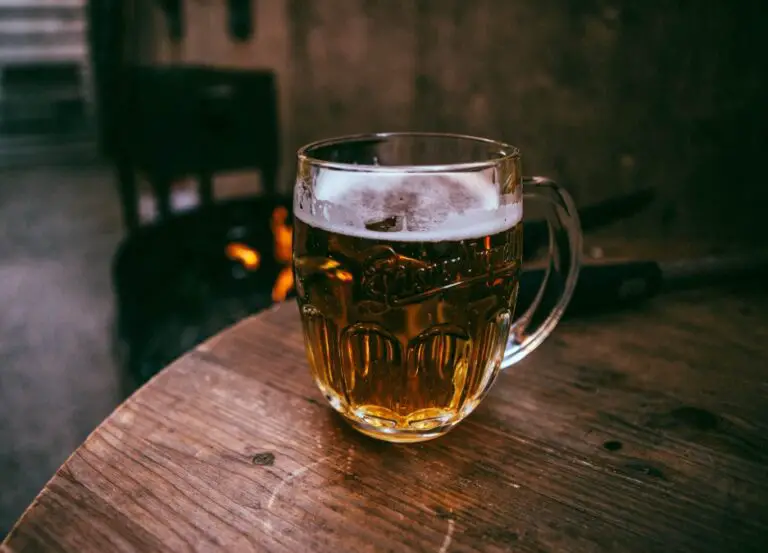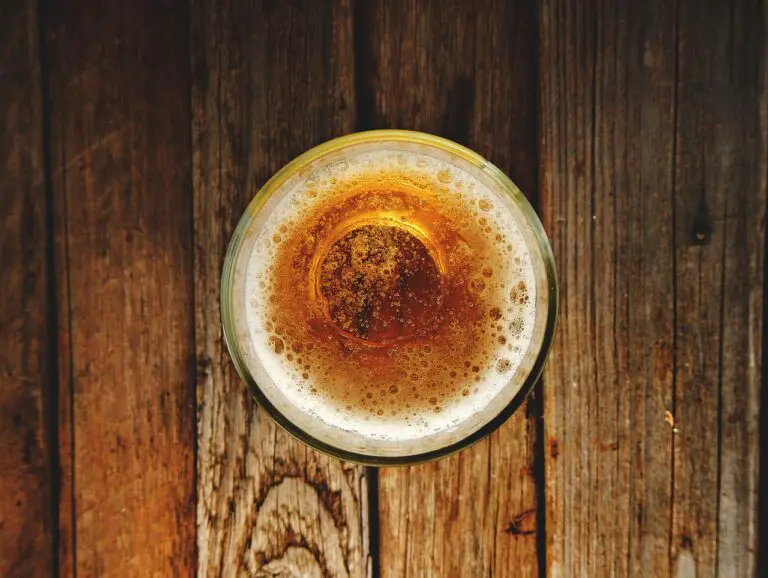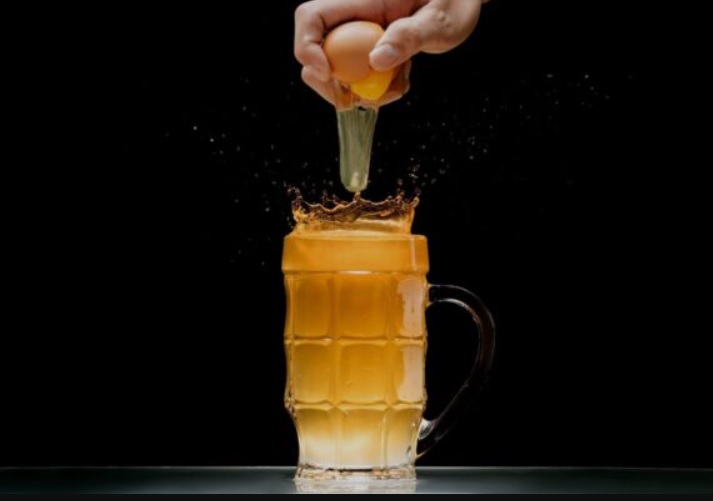Why Is Stout Dark?
What is Stout Beer?
Stout beer is a type of dark beer that is beloved by beer enthusiasts all over the world. But have you ever wondered why is stout dark? Let’s explore the reasons behind the deep, rich color of this popular beer style.
One of the primary factors that contribute to the dark hue of stout beer is the use of roasted barley during the brewing process. Roasted barley goes through a unique roasting process that imparts a dark color to the grains. As the grains are roasted, they develop a deeper flavor profile and release compounds that give the beer its characteristic dark color.
Moreover, stout beers often contain a higher percentage of malted barley than other beer styles. The malted barley undergoes a malting process where the grains are germinated and then dried. This process, combined with the roasting of the barley, leads to the production of complex flavors and a dark appearance in the final beer.
Stout beer comes in various styles, including imperial stouts, oatmeal stouts, milk stouts, Irish stouts, and American stouts, to name a few. Each style may have a slightly different brewing recipe, but they all share the common characteristic of being dark beers with robust flavors.
The popularity of stouts and their dark appearance can be traced back to the 18th century when stouts, particularly versions of porter, gained immense popularity. These beers were often enjoyed by working-class individuals as a nutritious and satisfying beverage.
Stout beers are known for their rich and complex flavors, with notes of coffee, bitter chocolate, and sometimes even hints of sweet flavors. The use of dark malt in the brewing process gives stout beer a distinct taste that sets it apart from other beer styles.
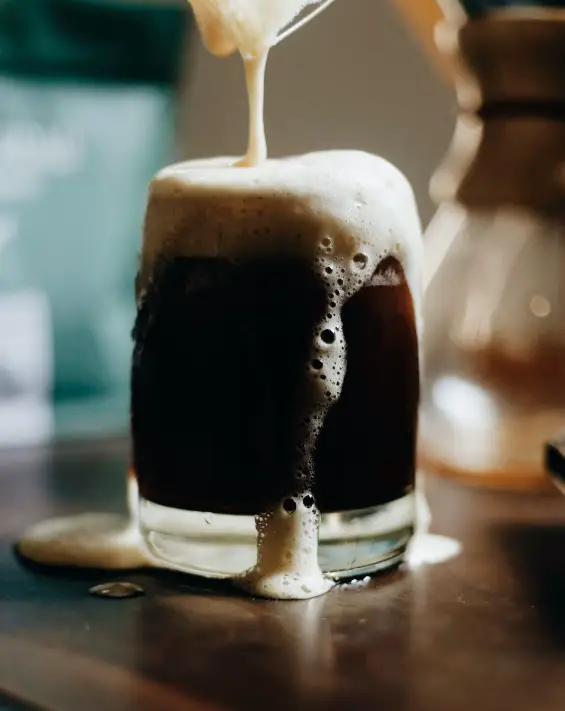
In addition to the robust flavors, stout beers also tend to have a slightly higher alcohol content compared to lighter beer styles. This elevated alcohol content adds to the overall strength and character of stout beers, making them a favorite choice among beer enthusiasts who enjoy stronger brews.
However, not all dark beers are stouts. While stouts are known for their dark appearance, other styles such as porters and Baltic porters also exhibit deep, rich colors. However, stouts have their own unique characteristics that distinguish them from these related beer styles.
Overall, the dark color of stout beer can be attributed to the use of roasted barley and the malting process that darkens and flavors the grains. This, in combination with the complex flavors and slightly higher alcohol content, creates a beer that is not only visually appealing but also incredibly satisfying to the taste buds. Whether it’s a classic Irish stout or a barrel-aged imperial stout, the dark appearance of stout beer is a testament to its rich history and unwavering popularity in the beer-drinking community.
Definition of “Dark”
When it comes to beer, the term “dark” refers to a specific characteristic of the brew’s appearance. Dark beers, such as stouts, porters, and Baltic porters, have a deep, rich color that ranges from dark brown to almost black. This darkness is the result of the malting and roasting processes that the grains undergo during brewing.
To understand why these beers are deemed “dark,” it’s essential to look at the ingredients and the brewing techniques involved. One of the key factors contributing to the darkness of these beers is the use of dark malt, particularly roasted barley. During the malting process, barley grains are germinated and then dried. The longer the grains are dried, the darker they become. Roasted barley, in particular, undergoes a unique roasting process that further intensifies its color, imparting a deep, rich hue to the brew.
In addition to the malt, other factors contribute to the darkness of these beers. The use of dark, caramel, or chocolate malts can also enhance the color, adding complexity and depth to the brew. Some beers may even incorporate adjuncts such as coffee, cocoa, or even lactose to create a darker, more flavorful profile.
It’s important to note that the darkness of a beer does not solely indicate its flavor or alcohol content. While dark beers are often associated with rich, full-bodied flavors and higher alcohol percentages, there are exceptions to this rule. For example, a dark mild or a Schwarzbier is a dark beer style that is actually known for its lower alcohol content and lighter body.
While dark beers may evoke images of heavy, robust brews, there is actually a wide range of flavors and styles within the category. From the smooth and creamy texture of milk stouts to the roasted bitterness of dry stouts, the definition of “dark” encompasses a diverse array of beers, each with their own unique characteristics.
In conclusion, the term “dark” in the context of beer signifies the deep, rich color of certain brews. This darkness is achieved through the malting and roasting processes of the grains, particularly roasted barley. While dark beers are often associated with intense flavors and higher alcohol content, the true definition of “dark” extends beyond these generalizations, embracing a wide variety of styles and flavors. So, the next time you reach for a dark beer, appreciate the complex brewing techniques and ingredients that give it its distinctive darkness.

Roasted Barley
Roasted barley is an essential ingredient that plays a crucial role in the creation of dark and flavorful beers, particularly stouts and porters. This specially treated grain undergoes a unique roasting process that not only gives it a distinct flavor profile but also contributes to the deep, rich color of these brews.
During the malting process, barley grains are soaked in water, allowing them to germinate and develop enzymes that convert starches into fermentable sugars. Once the germination process is complete, the grains are dried, and this is where roasted barley sets itself apart. Unlike other malted barley varieties that are dried quickly, roasted barley is subjected to higher temperatures for a longer duration.
This extended roasting process causes the barley to take on a dark hue and imparts a range of complex flavors to the beer. The longer the grains are roasted, the darker and more intense the resulting flavors become. Roasted barley can deliver notes of coffee, chocolate, toffee, and even hints of smoke or toasted bread, depending on the degree of roasting.
The addition of roasted barley to the brewing process adds a layer of depth and complexity to the beer’s flavor profile. It contributes to the overall bitterness, as the roasting process brings out more tannins, giving the beer a slightly dry and roasted character. This bitterness is balanced by the sweetness of the malted barley, creating a harmonious and well-rounded beer.
Aside from its impact on taste, roasted barley also contributes to the visual appeal of dark beers. Its deep, mahogany or ebony color is visually striking, hinting at the bold and robust flavors that await the beer drinker. This darkness sets stouts and porters apart from other beer styles, making them instantly recognizable.
Roasted barley is a key ingredient that allows brewers to craft stouts, porters, and other dark beers with their defining characteristics. Its unique flavors and intense color make it an indispensable component in the brewing process. So, next time you raise a glass of stout or porter, take a moment to appreciate the importance of roasted barley and the role it plays in creating these deliciously dark beverages.
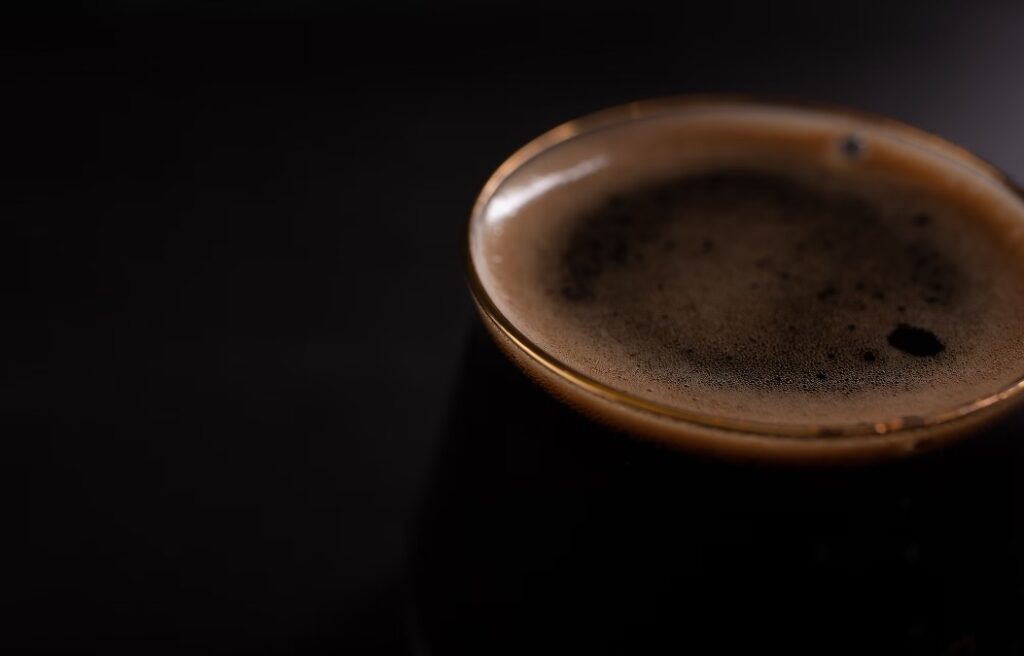
History of Use in Brewing
The history of the use of roasted barley in brewing can be traced back to the origins of stout and porter beers. These styles of beer have a long and rich history, dating back to the 18th century.
Stout originally referred to a strong version of a porter beer, which was a popular beer style in London at the time. The term “stout” was used to describe the higher alcohol content and stronger flavors of these beers. As the popularity of porters grew, breweries began experimenting with different ingredients and brewing techniques to create variations of this beloved style.
One such innovation was the addition of roasted barley to the brewing process. Brewers discovered that by using roasted barley instead of, or in addition to, other malted barley varieties, they could create a beer with a darker color and more pronounced roasted flavors.
The use of roasted barley in brewing was a game-changer for stout and porter beers. It added depth and complexity to the flavor profile, elevating these styles from their already delicious base. The roasted barley brought out notes of coffee, chocolate, and toffee, complementing the sweet and malty flavors of the beer.
Over time, different variations of stout and porter beers emerged, each with its own unique characteristics and brewing methods. For example, oatmeal stouts began to gain popularity, with brewers adding oatmeal to the recipe for a smoother and creamier mouthfeel. Milk stouts incorporated lactose, a sugar derived from milk, to add sweetness and a richer texture.
In recent years, there has been a resurgence of interest in stout and porter beers, with craft breweries pushing the boundaries of what’s possible. Brewers have experimented with barrel aging, adding adjuncts like vanilla or coffee, and even creating pastry stouts with flavors reminiscent of desserts.
Today, stout and porter beers continue to captivate beer drinkers with their complex flavors and dark, inviting appearance. The use of roasted barley remains a fundamental element in creating these beloved styles, contributing to their distinct flavor profiles and setting them apart from other types of beer.
So, the next time you enjoy a rich and velvety stout or a robust porter, take a moment to appreciate the history and craftsmanship behind it. The use of roasted barley in brewing has played a significant role in shaping these beers, ensuring their enduring popularity and ensuring that they remain a favorite among beer enthusiasts worldwide.

Flavor Profile and Dark Coloration
One of the defining characteristics of stout beers is their rich and complex flavor profile. Stout lovers are often drawn to the deep, complex flavors that these beers offer, which are a result of the ingredients and brewing techniques used during the production process.
One key ingredient that contributes to the flavor profile of stouts is roasted barley. This specialty grain provides a deep, toasty flavor that sets stouts apart from other beer styles. During the brewing process, the barley is exposed to high temperatures, resulting in the caramelization of sugars and the development of rich, roasted flavors. These flavors often present themselves as notes of coffee, chocolate, and toffee, giving stouts a delightful range of tastes.
The use of roasted barley also gives stout beers their distinctive dark coloration. The deep, opaque hues of stouts are a result of the roasted barley’s influence on the beer’s appearance. As the barley grains undergo the roasting process, they become darkened and impart their deep color to the beer. This dark coloration is highly sought after by stout enthusiasts, as it adds to the overall allure and visual appeal of the beer.
Alongside roasted barley, other specialty malts may also be used in the brewing process of stouts to further enhance their flavor and color. Different malts, such as chocolate malt or black malt, can be employed to create additional layers of complexity in the beer’s character. These malts contribute flavor profiles that range from subtle hints of toffee and caramel to bolder, more pronounced notes of dark chocolate and roastiness.
The combination of roasted barley and specialty malts, along with careful fermentation, creates stout beers with a complex and multi-dimensional flavor experience. Depending on the specific recipe and brewing techniques employed, stout beers can be sweet, bitter, or even exhibit a balancing act between these two characteristics. The flavors present in stouts can vary from one brew to another, providing a wide range of options for beer enthusiasts to explore and enjoy.
In conclusion, the unique flavor profile and dark coloration of stout beers can be attributed to the carefully selected ingredients and intricate brewing methods employed in their production. The use of roasted barley and specialty malts brings forth a range of flavors that range from coffee and chocolate to toffee and caramel. The resulting deep and captivating coloration of stouts adds to their overall allure and visual appeal. With their complex flavors and enticing appearance, stouts continue to captivate beer drinkers around the world.
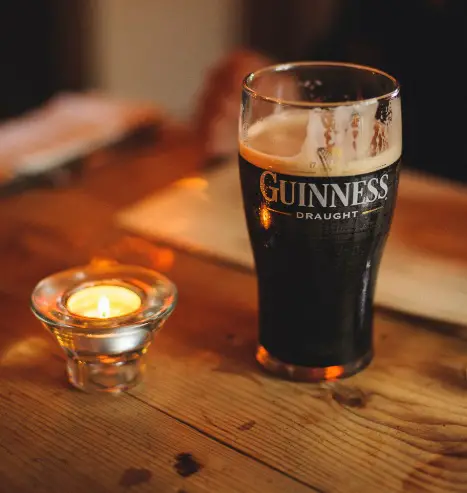
Popularity of Roasted Barley in Stouts
Roasted barley has played a crucial role in the popularity of stouts, making them a beloved beer style among enthusiasts worldwide. The unique flavors and characteristics imparted by this specialty grain have helped shape stouts into a sought-after and widely consumed category of dark beers.
One of the reasons roasted barley has gained popularity in stouts is its ability to create a rich and robust flavor profile. As the barley undergoes the roasting process, sugars within the grain undergo caramelization, resulting in captivating tastes that range from toffee and chocolate to coffee and roasted nuts. These flavors add depth and complexity to stouts, making them a favorite choice for those seeking bold and flavorful brews.
Additionally, roasted barley contributes significantly to the dark coloration that is emblematic of stouts. The deeply opaque hues that stouts possess are a result of the barley’s influence during the brewing process. The visually striking appearance of a stout adds to the overall allure and mystique of the beer, further captivating beer enthusiasts and drawing them to this style.
Stout drinkers also appreciate the versatility that roasted barley offers. Brewers can experiment with different roasting techniques and barley varieties to achieve varying intensities and flavors. This versatility allows for a wide range of stouts on the market, catering to different preferences and palates. From the smooth and comforting notes of milk stouts to the bold bitterness of imperial stouts, roasted barley adds a distinct dimension to each beer, making it unique and enticing in its own right.
Furthermore, the popularity of roasted barley in stouts can be attributed to its connection to brewing traditions and historical significance. Stouts have a rich heritage that dates back to the 18th century, where roasted barley was commonly used. This link to the past adds a sense of authenticity and tradition to stouts, further fueling their popularity among beer enthusiasts who appreciate the history and craftsmanship behind their favorite brews.
In conclusion, roasted barley has become a staple in the production of stouts due to its ability to create a complex and enticing flavor profile, contribute to the visually striking appearance of the beer, its versatility in brewing techniques, and its historical significance. These factors have propelled stouts into the limelight, captivating beer drinkers and solidifying their position as a popular and beloved beer style worldwide.

Malted Barley
Malted barley is an essential ingredient in the brewing process of stouts, adding depth, complexity, and unique characteristics to these dark and flavorful beers. It is a key component that contributes to the distinct identity of a stout and plays a vital role in shaping its taste profile.
Malted barley undergoes a process called malting, in which barley grains are soaked in water and allowed to germinate. This germination triggers enzymes within the grain that convert starches into fermentable sugars. The malted barley is then dried, which halts the germination process and preserves the sugars, enzymes, and other essential compounds.
The malting process is crucial because it activates enzymes that play a vital role in breaking down starches into sugars during brewing. These sugars are then consumed by yeast during fermentation, converting them into alcohol and carbon dioxide. The result is a full-bodied and flavorful beer with a complex range of flavors.
In stouts, malted barley helps achieve rich and delectable flavors that range from caramel and toffee to hints of chocolate, coffee, and roasted nuts. The type of malted barley used and the degree of roasting can greatly influence the flavor profile and intensity of these characteristics. Brewers can select various malted barley varieties and experiment with different roasting techniques to create their desired stout flavor.
Malted barley also plays a significant role in determining the color of a stout. The dark, almost black appearance of stouts is partially a result of the roasted malted barley. The longer and darker the barley is roasted, the more intense the color becomes, giving stouts their iconic deep, opaque black hues.
Furthermore, malted barley offers a range of options for brewers to achieve specific characteristics in their stouts. Different varieties of malted barley, such as chocolate malts, black malts, and roasted barley, provide varying levels of sweetness, bitterness, and roasted flavors. Brewers can carefully select and blend these malts to create stouts with unique profiles, catering to a wide array of tastes.
Ultimately, malted barley is a cornerstone ingredient that contributes to the allure and complexity of stouts. Its role in flavor development, coloration, and versatility makes it an indispensable component in creating these beloved dark beers. Whether you prefer a rich and creamy milk stout or a robust and bitter imperial stout, malted barley is there, infusing each sip with its distinctive character and adding to the overall enjoyment of this timeless beer style.
History of Use in Brewing
The use of malted barley in brewing can be traced back to ancient times, with evidence of beer production dating as far back as the Neolithic period. It is believed that the discovery of brewing was a serendipitous accident, where grains being stored in damp conditions began to ferment, resulting in a frothy and intoxicating beverage.
As brewing techniques evolved and became more refined, malted barley emerged as a favored ingredient due to its rich flavors and fermentable sugars. In fact, the earliest recorded beer recipe, dating back to the Sumerians in Mesopotamia around 1800 BCE, specifically mentions the use of barley malt.
Throughout history, different cultures and regions have put their own spin on brewing with malted barley. In medieval Europe, monastic brewing traditions flourished, with monks cultivating their own barley crops and perfecting brewing techniques. These skilled brewers played a crucial role in preserving and expanding knowledge of the brewing process.
During the 18th century in England, the popularity of porters and stouts soared, leading to the increased use of malted barley in brewing. Porters and stouts were known for their robust and dark flavors, which were achieved through the use of heavily roasted barley malts. This marked the beginning of the “dark beer” era, with stouts gaining a reputation for their rich and full-bodied character.
In recent times, the craft beer movement has brought renewed interest in stouts and a broader range of malted barley options. Brewers now have access to an extensive selection of malted barley varieties, ranging from traditional ones like chocolate malts and roasted barley to innovative options like smoked malt and specialty malts. These versatile ingredients allow brewers to push the boundaries of flavor and create unique and complex stouts.
The history of malted barley in brewing is a testament to the enduring appeal of this key ingredient. From the earliest civilizations to today’s vibrant craft beer scene, malted barley has played an integral role in creating the rich and distinctive flavors that beer enthusiasts crave. So, the next time you enjoy a dark and luscious stout, take a moment to appreciate the rich history and ingenuity behind the use of malted barley in brewing.

Flavor Profile and Dark Coloration
One of the defining characteristics of stouts is their distinct flavor profile and dark coloration. While stouts come in various styles and variations, they all share a common thread of rich, complex flavors and a deep, almost black hue.
The flavor profile of stouts is often described as bold and robust. This is achieved through the careful selection of ingredients and meticulous brewing techniques. Roasted barley, a key component in stout brewing, imparts flavors of coffee, dark chocolate, and even hints of smoke. This gives stouts a pleasantly bitter and slightly roasted taste that sets them apart from other beer styles.
In addition to roasted barley, other malted grains such as chocolate malt, black patent malt, and caramel malt are often used to enhance the depth and complexity of stout flavors. These specialty malts add layers of sweetness, nuttiness, and toffee-like notes, creating a balanced and multi-dimensional taste experience.
The dark coloration of stouts is a result of the roasting process and the choice of malts used. When barley is roasted, it undergoes a chemical change that transforms its sugars and produces a deep amber to black color. This process also contributes to the intense flavors found in stouts, as the roasted grains release compounds that create the characteristic bitterness and roasted aromas.
While stouts are known for their darkness, it’s important to note that not all dark beers are stouts. Porters, for example, share some similarities with stouts but typically have a lighter body and a slightly milder flavor profile. Stouts, on the other hand, are generally fuller-bodied and have a more pronounced roasted character.
The strong flavors and dark coloration of stouts make them the perfect choice for beer enthusiasts who enjoy bold and complex beverages. Whether it’s an Irish stout with its dry and slightly hoppy finish, a creamy milk stout with its smooth and luscious mouthfeel, or a barrel-aged stout with its rich and boozy undertones, there is a stout out there to suit every palate.
So, the next time you find yourself in search of a beer that packs a flavorful punch, look no further than a stout. From their complex flavor profiles to their mesmerizing dark appearance, stouts are a true testament to the craftsmanship and creativity of brewers around the world.
Popularity of Malted Barley in Stouts
The popularity of malted barley in stouts cannot be overstated. This essential ingredient plays a crucial role in creating the rich and complex flavors that stouts are known for. Malted barley is a type of barley that has been soaked in water, allowed to germinate, and then dried and roasted. This process activates enzymes within the barley that convert starches into fermentable sugars, which are essential for the brewing process.
In stouts, malted barley provides the base for the beer, contributing both color and flavor. The dark malted barley used in stouts undergoes a higher degree of roasting than in other beer styles, resulting in the deep, almost black hue that is characteristic of stouts. This intense roasting process also imparts flavors of coffee, dark chocolate, and even hints of toffee and caramel.
Aside from its color and flavor contributions, malted barley also adds body and sweetness to stouts. The sugars derived from the malted barley provide food for the yeast during the fermentation process, leading to the production of alcohol and carbon dioxide. The use of malted barley in stouts creates a full-bodied brew with a satisfyingly rich and creamy mouthfeel.
Stouts can vary in their malted barley content, with some brewers opting for a higher percentage of roasted malt for an even more pronounced roasted flavor. Others may use a combination of different types of malted barley to achieve a specific flavor profile. This flexibility with malted barley allows brewers to create a wide range of stouts, from dry and bitter Irish stouts to decadent pastry stouts with sweeter, dessert-like flavors.
The popularity of malted barley in stouts can be attributed to its versatility and ability to create depth and complexity in beer. The distinct flavors and textures that malted barley brings to stouts have captivated beer enthusiasts all over the world. From traditional Irish stouts to barrel-aged and imperial stouts, malted barley continues to play a significant role in shaping the rich and indulgent characteristics of this beloved beer style. So next time you’re sipping on a velvety smooth stout, raise a glass to malted barley for its contribution to the wonderful world of stouts.

Unmalted Grains
Unmalted grains are a key ingredient that adds complexity and depth to many beer styles, including stouts. While malted barley is typically the primary grain used in brewing, brewers often incorporate other unmalted grains to enhance flavor and contribute unique characteristics.
Unmalted grains, such as oats, wheat, corn, rice, and rye, offer a range of possibilities for brewers looking to experiment with different flavors and textures in their stouts. One popular example is oatmeal stout, which utilizes unmalted oats to create a smooth, velvety mouthfeel and a distinct creamy taste. The addition of oats adds a level of thickness and silkiness to the beer, enhancing its overall richness.
Unmalted grains not only alter the mouthfeel but also impart distinct flavors. For instance, the use of unmalted wheat can contribute a light, crisp, and slightly tart character to a stout, while unmalted rye can add a spicy and robust earthiness. Brewers may also choose to incorporate unmalted corn or rice to lighten the body of the beer and create a crisper, drier finish.
In addition to texture and flavor, unmalted grains play a crucial role in the brewing process. When combined with malted barley, they contribute enzymes that aid in the conversion of starches into fermentable sugars. The enzymes in unmalted grains help break down complex carbohydrates, providing more food for the yeast during fermentation and resulting in a fuller-bodied and more flavorful beer.
It’s worth noting that the use of unmalted grains requires careful consideration and skill on the part of the brewer. Since unmalted grains lack enzymes and are more difficult to convert, they typically need to be cooked or processed before being added to the brewing process. Some brewers opt to cook the grains in a process known as cereal mashing to extract the maximum flavor and fermentable sugars.
Unmalted grains add a layer of complexity and variety to stouts, allowing brewers to create unique and memorable brews. Whether it’s the smooth creaminess of oatmeal stouts or the spicy kick of rye-infused versions, the use of unmalted grains broadens the possibilities for creating diverse and flavorful stouts. So, the next time you enjoy a stout, take a moment to appreciate the contributions of these unsung heroes in bringing a robust and satisfying beer to your glass.
History of Use in Brewing
The use of unmalted grains in brewing has a rich history that dates back centuries. In fact, it can be traced back to the origins of the stout style itself.
During the 18th century in England, brewers began experimenting with different malts and grains in an effort to create unique and flavorful beers. It was during this time that the stout style, originally known as a “brown stout,” gained popularity. Brewers would often use a combination of malted barley and unmalted grains to achieve a rich and full-bodied beer with complex flavors.
One notable example of this early use of unmalted grains is the famous Irish stout. Irish brewers, such as the iconic Guinness brewery, incorporated large amounts of unmalted roasted barley into their recipes. This roasted barley lent a distinctive dark color and a robust, roasted flavor to the beers, giving them their characteristic “stoutness.”
As the stout style continued to evolve and gain popularity, brewers in other parts of the world began experimenting with different variations and additions to the traditional recipe. In the United States, for example, brewers started using unmalted oats in their stouts to create a smoother and creamier mouthfeel. This led to the emergence of oatmeal stouts, which are now beloved for their velvety texture and subtle sweetness.
Over time, the use of unmalted grains in brewing expanded beyond just stouts. Brewers started incorporating unmalted grains in other styles such as porters, ales, and even lagers, to add complexity and depth to their creations. The versatility of unmalted grains allowed brewers to create a wide range of beers with diverse flavors and profiles.
Today, the use of unmalted grains in brewing continues to be embraced by craft brewers around the world. From imperial stouts with notes of bitter chocolate and coffee to barrel-aged stouts with hints of bourbon and vanilla, the possibilities are endless.
The history of using unmalted grains in brewing is a testament to the creativity and ingenuity of brewers throughout time. It’s an art form that has evolved and adapted over centuries, giving beer enthusiasts a wide array of delicious and complex brews to enjoy. Cheers to the brewers who continue to push the boundaries of what is possible in the world of beer!
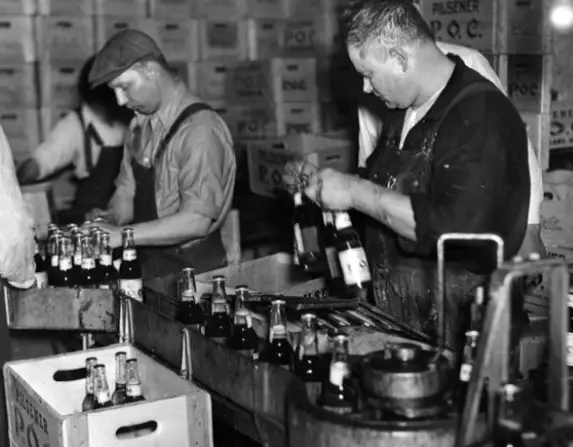
Flavor Profile and Dark Coloration
Flavor Profile
The flavor profile of a stout is a key element that sets it apart from other beer styles. Stout beers are known for their rich, bold, and complex flavors. The primary flavors that can be found in stouts include roasted malt, chocolate, coffee, and even hints of caramel and toffee. These flavors are often achieved through the use of specialty malts and grains during the brewing process.
The roasted malt brings a deep, toasty flavor to the stout beer. It adds a pleasant bitterness and a subtle smokiness that balance out the sweetness. The chocolate and coffee notes are derived from the combination of dark malts and specialty grains. These flavors can range from a mild, subtle presence to a robust, intense character, depending on the specific stout variation.
Dark Coloration
One of the most distinct characteristics of stout beers is their dark coloration. Unlike pale lagers or ales, stouts possess a deep, almost black hue. This darkness is a result of the malts used during the brewing process, particularly heavily roasted and kilned malts.
The malting process involves soaking and germinating barley grains, followed by drying and roasting. The degree of roasting determines the color and flavor of the malt. For stouts, malts are roasted to a darker level, which imparts a deep brown to black color to the beer.
In addition to roasted malts, other ingredients can contribute to the dark coloration of stouts. Coffee or chocolate malts, for example, add a dark brown color, while the use of darker, caramelized sugars can deepen the hue even further.
The dark color not only gives stouts their unique appearance but also influences the perception of their flavor. The visual richness of a stout reflects the robust and complex flavors that await the beer drinker. The dark color is also associated with strength and intensity, thus enhancing the overall experience of enjoying a stout.
In conclusion, the flavor profile and dark coloration are two defining characteristics of stout beers. The use of roasted malt, chocolate, coffee, and other specialty malts and grains contribute to the complex flavors found in stouts. The dark color, achieved through the roasting process and use of dark malts, adds visual richness and enhances the perception of strength and intensity. Whether you prefer the bold roastiness of an Irish stout or the silky smoothness of an oatmeal stout, stouts offer a world of flavors and a visual allure that beer lovers cannot resist.
Hops & Other Additives
Hops & Other Additives: Enhancing the Complexity of Stouts
While the use of malts is essential for achieving the deep, dark color and rich flavors of stouts, it is the addition of hops and other additives that truly elevate the complexity of these beers. Hops are the flowers of the Humulus lupulus plant and are commonly used in brewing to balance the sweetness of malt with bitterness, add aroma, and act as a natural preservative.
In stout beers, the hop presence is typically less pronounced compared to other beer styles. This is because stouts are more focused on malt-forward flavors rather than hop bitterness. However, that does not mean hops are completely absent from stouts. Instead, they are used to provide a subtle bitterness and contribute to the overall flavor profile.
Hop varieties chosen for stouts are often those with earthy, herbal, or spicy characteristics. These hops complement the roasted flavors of the malt, bringing a pleasant balance to the sweetness. They can also add subtle floral, citrus, or pine notes that enhance the aroma and overall drinking experience.
In addition to hops, stouts can incorporate a variety of other additives to further enhance their complexity. One popular addition is the use of roasted barley. Roasted barley brings a distinct, dry bitterness and a coffee-like character to stouts. It adds depth to the flavor profile, giving stouts a smooth and robust finish.
Another common additive is lactose, which is a milk sugar derived from dairy products. Lactose is frequently used in milk stouts to enhance the sweetness and add a creamy, smooth mouthfeel. The addition of lactose gives stouts a unique and luscious quality that sets them apart from other beer styles.
Additionally, oatmeal is sometimes included in stouts to contribute to the beer’s texture and mouthfeel. Oatmeal stouts, in particular, have a smooth and velvety feel on the palate, thanks to the presence of oatmeal. Oats also lend a mild sweetness and a subtle nutty flavor to the beer, enhancing its overall complexity.
Stouts can also undergo different aging processes to further enhance their flavors. Barrel-aging, for instance, involves aging the beer in wooden barrels that previously held spirits such as bourbon or whiskey. This aging imparts unique flavors from the barrel, such as vanilla, oak, and sometimes even a hint of the previous spirit, adding another layer of complexity to the stout.
In conclusion, the use of hops and other additives plays a crucial role in enhancing the complexity of stouts. Hops provide a delicate bitterness and added aromas, while other additives such as roasted barley, lactose, oatmeal, and barrel-aging contribute to the beer’s flavor, texture, and overall drinking experience. These ingredients work in harmony with the malts to create a truly remarkable and satisfying stout that beer enthusiasts can enjoy.
Role Played by Hops & Other Additives in Making Stout Darker
Hops and other additives play crucial roles in creating the deep, dark color that is characteristic of stouts. While malt is the primary ingredient responsible for the darkness, it is the careful selection of hops and the addition of certain additives that contribute to the overall richness and complexity of these beers.
When it comes to stouts, the focus is more on the malt-forward flavors rather than hop bitterness. However, hops still play a vital role in balancing the sweetness of the malt and enhancing the overall flavor profile of the stout. In stouts, hop presence is typically more subdued compared to other beer styles, but it is still present.
Hop varieties chosen for stouts are often those with earthy, herbal, or spicy characteristics. These hops complement the roasted flavors of the malt, bringing a delightful balance to the sweetness. They can also add subtle floral, citrus, or pine notes that enhance the aroma and overall drinking experience.
However, the use of hops alone is not enough to achieve the desired darkness in stouts. Additives such as roasted barley are commonly incorporated during the brewing process. Roasted barley adds a distinct, dry bitterness and imparts a coffee-like character to stouts. It brings depth to the flavor profile, giving stouts a smooth and robust finish that beer enthusiasts love.
Apart from roasted barley, lactose is another notable additive used in stouts, particularly in milk stouts. Lactose, a milk sugar derived from dairy products, enhances the sweetness and adds a creamy, smooth mouthfeel to stouts. This addition creates a unique and luscious quality that sets milk stouts apart from other beer styles.
Oatmeal is yet another additive that contributes to the darkness and complexity of stouts. Oatmeal stouts, in particular, have a smooth and velvety texture thanks to the inclusion of oats. Oats also bring a mild sweetness and subtle nutty flavor to the beer, further enhancing its overall complexity.
In addition to these additives, stouts can undergo different aging processes to deepen their flavors. Barrel-aging, for instance, involves aging the beer in wooden barrels that previously held spirits such as bourbon or whiskey. This aging imparts unique flavors from the barrel, such as vanilla, oak, and sometimes even a hint of the previous spirit. This aging process adds another layer of complexity to the stout, making it darker and more intriguing.
In conclusion, while malts contribute significantly to the darkness of stouts, it is the selection of hops and the addition of additives such as roasted barley, lactose, and oats that truly enhance the complexity and richness of these beers. These ingredients, along with aging processes like barrel-aging, create a deep, dark color and deliver a truly unforgettable drinking experience for stout enthusiasts.

I am a young architect with a passion that goes beyond blueprints… it’s beer! undertherosebrewing.com is more than just a blog, it’s a manifestation of my lifelong dream to explore, read, and learn everything about beer. Join the blog on this unfiltered and genuine adventure into the heart of beer culture. Cheers!


